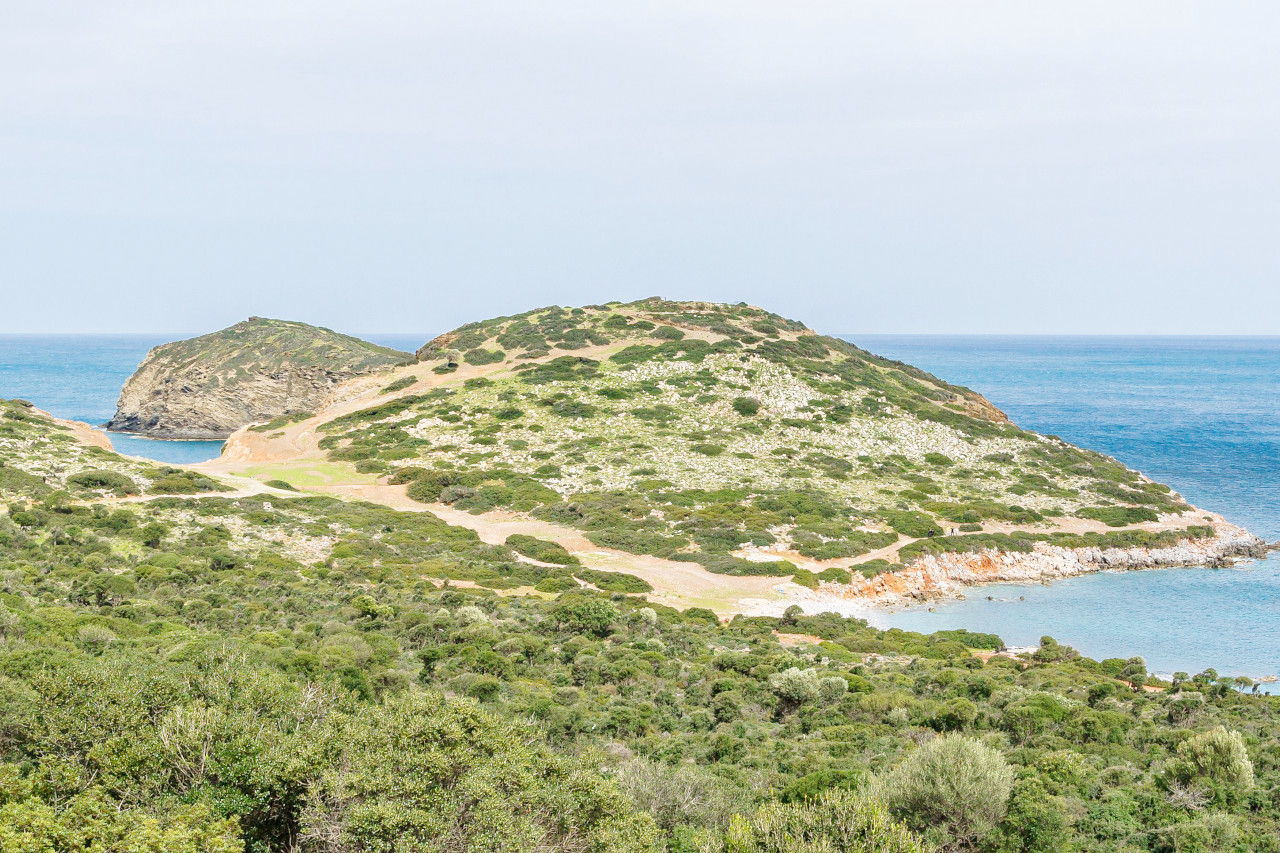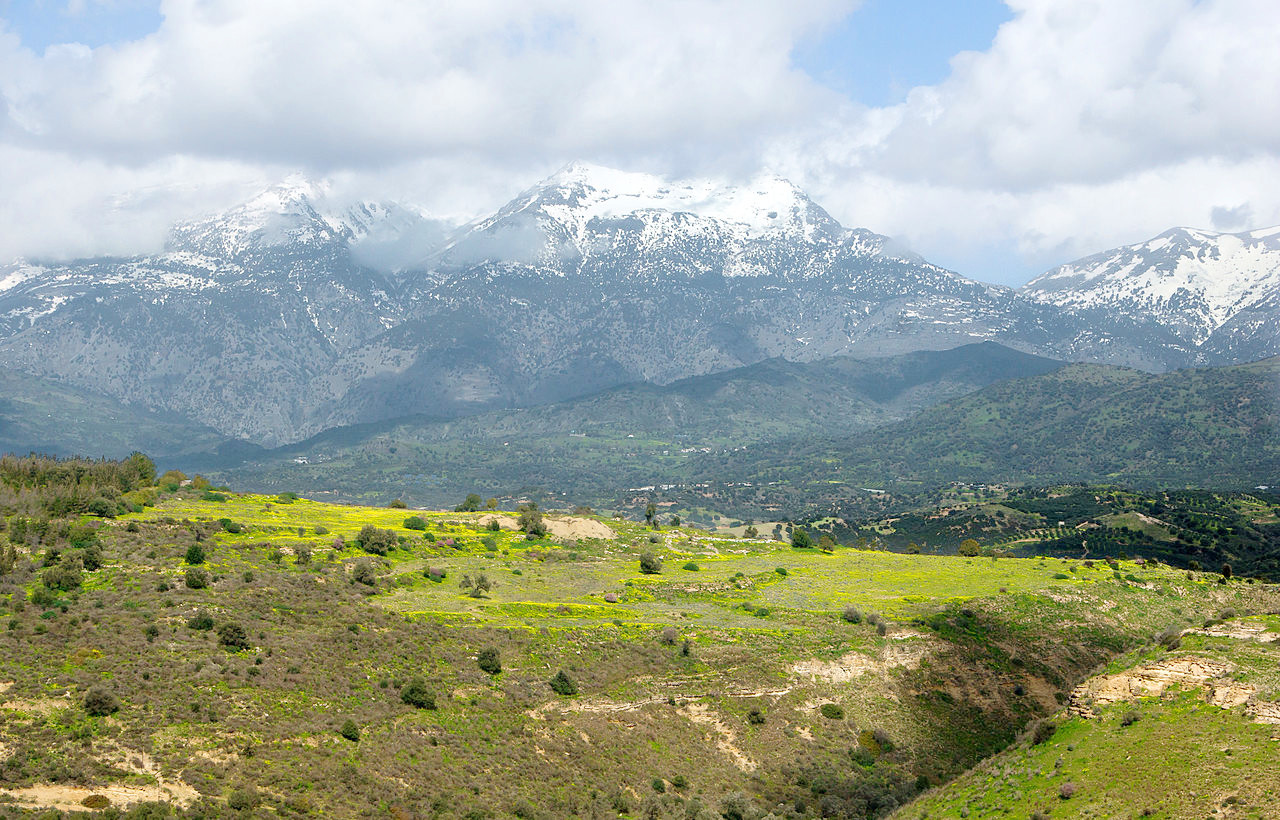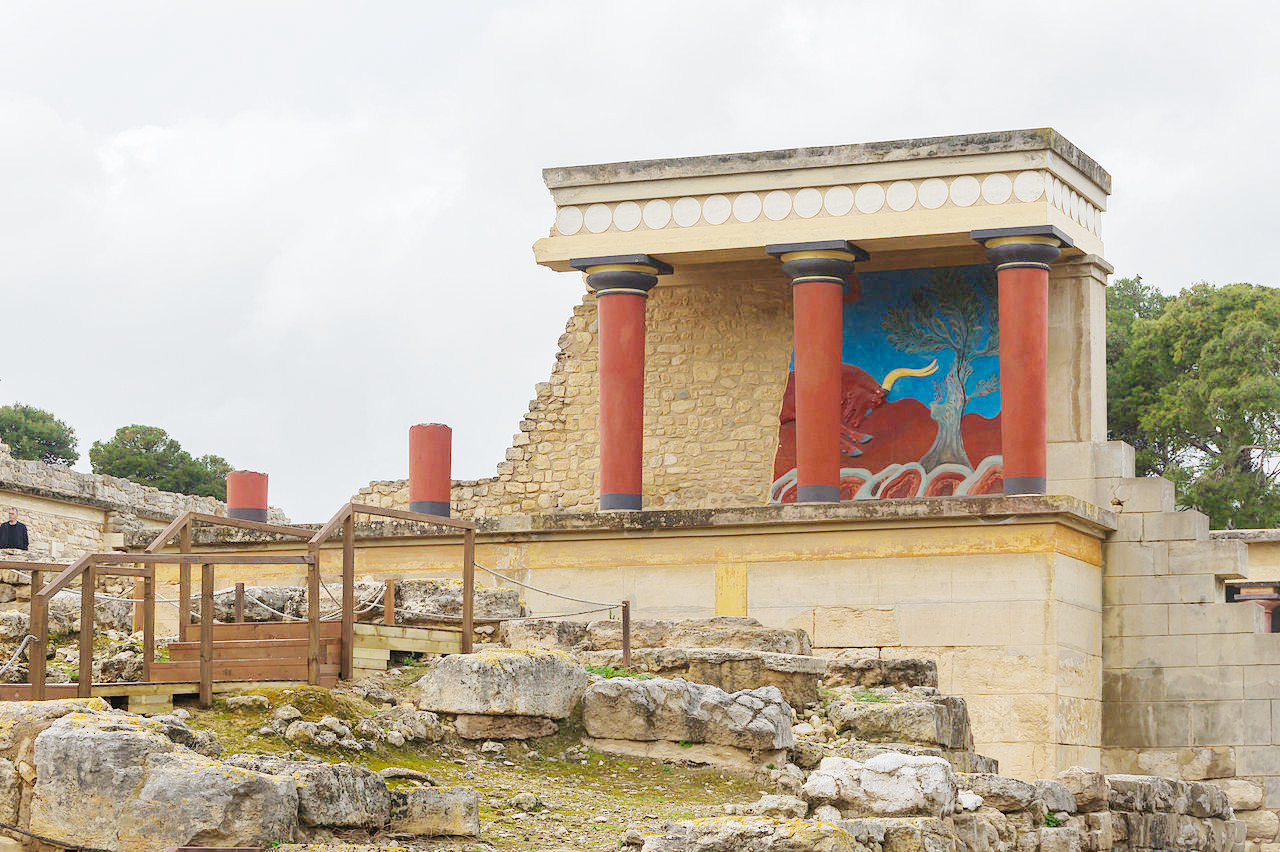The Geography of
Crete
Why visit Crete?
The mythical birthplace of Zeus, Crete is the meeting-ground of many civilizations. The islands offers magnificent mountain scenery with an astonishing variety of wildflowers, and some of the best beaches in Greece, It is also site of extensive remains of early Minoan civilization, including the beautiful Palace of Knossos.
Contents
Map
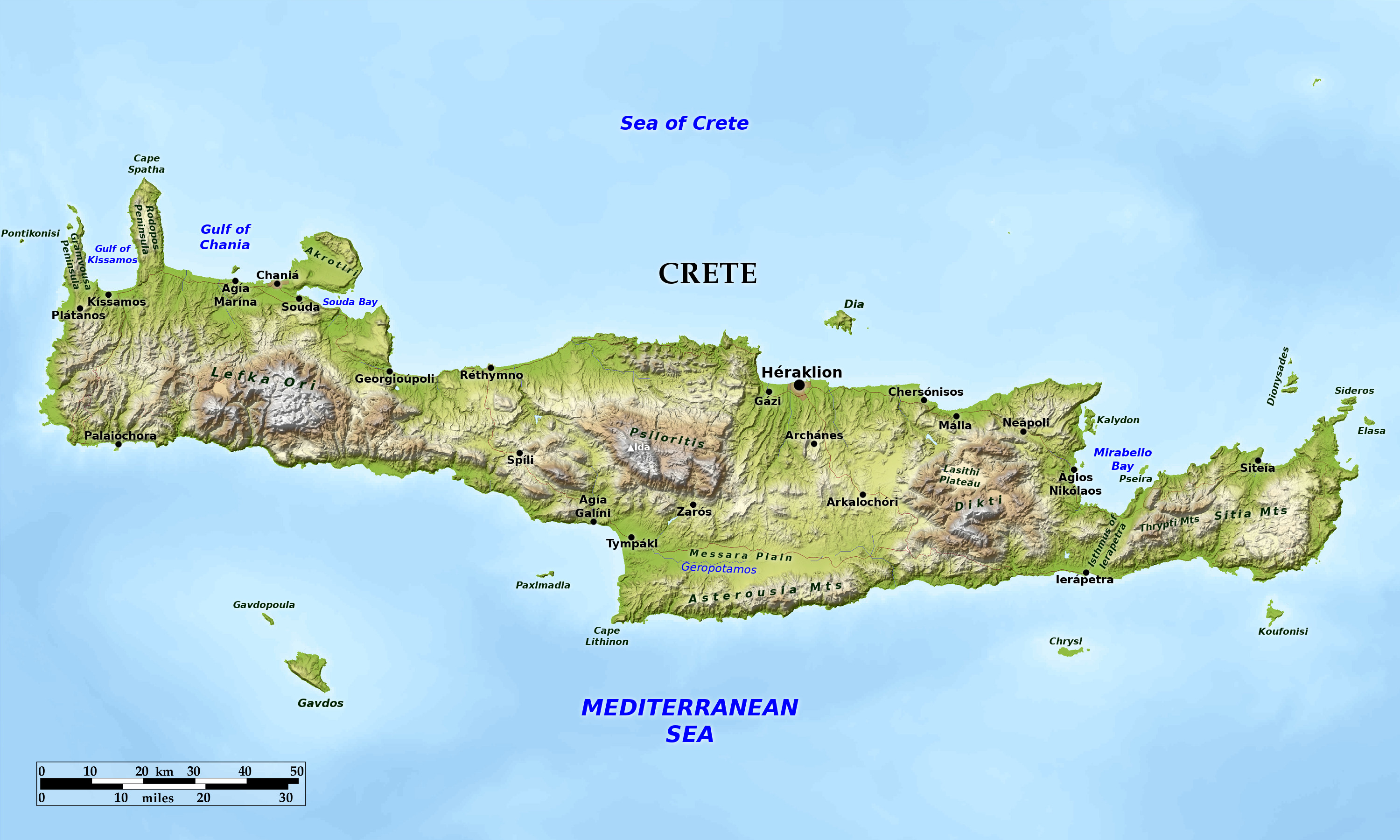 Relief map of Crete
Relief map of Crete
What is the landscape of Crete like?
By far the largest of the Greek islands is Crete, 160 miles long from west to east. The greater part of the island is occupied by ranges of mountains which form four principal groups. In the west rises the massive range of the Lefka Ori (White Mountains) directly overhanging the southern coast with spurs projecting towards the west and northwest. In the centre is the smaller, almost detached mass of Psiloritis, culminating in Mount Ida at 2,456 meters (8,058 feet)—the highest summit in the island. To the east are the Dikti mountains which surround the high but fertile Lasithi Plateau. Farther east the hills of Sitia.
The principal mountain groups are for the greater part of the year covered with snow. Deep narrow ravines, bordered by steep cliffs, traverse the mountainous districts; into some of these the daylight scarcely penetrates, and snow can remain all year round. Numerous large caves exist in the mountains. In general, the mountain masses lie nearer the south than the north coast and which cause the steep harbourless south coast to contrast with the more gentle northward slope, whose fertile foothills sink seawards to convenient bays.
The amazingly advanced Minoan civilization flourished on Crete 4,000 years ago. The island is famous for the great Minoan palaces at Knossos and Phaistos, together with many other Minoan towns, some of considerable extent, which have been excavated. The ruins at Knossos are so extensive and so complicated, they may even have given rise to the legend of its labyrinth. The reconstructed parts of the Palace include their blood-red pillars and the triple-storeyed Grand Staircase. Other highlights include the various royal apartments decorated with their famous murals; the extensive and advanced sewage system; the armoury; the royal tomb; the restored Throne Room; the Hall of the Double Axes; and the Queen's Palace complete with its advanced plumbing.
What is the nature of Crete like?
Only small patches of the original forest survive, consisting of cypress, Calabrian pine and evergreen holm oak; with plane, sweet chestnut and introduced eucalyptus in the river valleys. The lower hills and the valleys, which are extremely fertile, are covered with olive groves. Chestnut woods and forests of the Valonia oak occur in some places. Pears, apples, quinces, mulberries and other fruit-trees flourish, as well as vines.
Where there is an absence of trees, many smaller shrubs and plants cover the hillsides; these include fragrant herbs such as mint, oregano, sage, and thyme; and a wonderful range of wildflowers, bulbs, and orchids for which Crete is renowned. The best time to see the flowers is April and May when the landscape is rich in wildflowers.
What is the climate of Crete like?
The climate of Crete varies from the frost-free coastal zone, via the temperate uplands to the alpine slopes of the central mountain ranges. Crete is renowned for its sunshine with sandy beaches, high mountains, and warm, flower-scented air. The summer, from June to September, is hot and dry, and the sun is intense. Cretans stay indoors for the hottest part of the day and cover up when they go out, to prevent sunburn. Spring is delightful, with flower-filled meadows and warm, but not searing, sunshine. Fall begins in October and is marked by occasional downpours that can last a day or an hour, interspersed by days of brilliant blue skies and sunshine. Crete is also popular as a winter-holiday destination. It is possible to ski in the mountains during the day and eat outdoors by the coast in the evening.
| Climate data for Heraklion (1981-2010) | |||||||||||||
|---|---|---|---|---|---|---|---|---|---|---|---|---|---|
| Month | Jan | Feb | Mar | Apr | May | Jun | Jul | Aug | Sep | Oct | Nov | Dec | Year |
| Average high °C (°F) | 15.3 (59.5) | 15.5 (59.9) | 16.7 (62.1) | 20.0 (68.0) | 23.5 (74.3) | 27.3 (81.1) | 28.7 (83.7) | 28.5 (83.3) | 26.4 (79.5) | 23.4 (74.1) | 20.0 (68.0) | 17.0 (62.6) | 21.9 (71.3) |
| Daily mean °C (°F) | 12.1 (53.8) | 12.2 (54.0) | 13.5 (56.3) | 16.5 (61.7) | 20.3 (68.5) | 24.4 (75.9) | 26.1 (79.0) | 26.0 (78.8) | 23.5 (74.3) | 20.0 (68.0) | 16.6 (61.9) | 13.7 (56.7) | 18.7 (65.7) |
| Average low °C (°F) | 9.0 (48.2) | 8.9 (48.0) | 9.7 (49.5) | 11.8 (53.2) | 15.0 (59.0) | 19.1 (66.4) | 21.6 (70.9) | 21.8 (71.2) | 19.3 (66.7) | 16.5 (61.7) | 13.4 (56.1) | 10.8 (51.4) | 14.7 (58.5) |
| Average rainfall mm (inches) | 90.1 (3.55) | 67.6 (2.66) | 58.2 (2.29) | 28.5 (1.12) | 14.2 (0.56) | 3.5 (0.14) | 1.0 (0.04) | 0.6 (0.02) | 17.7 (0.70) | 64.9 (2.56) | 59.0 (2.32) | 77.9 (3.07) | 483.2 (19.03) |
| Source: Hellenic National Meteorological Service | |||||||||||||
The official websites
Crete
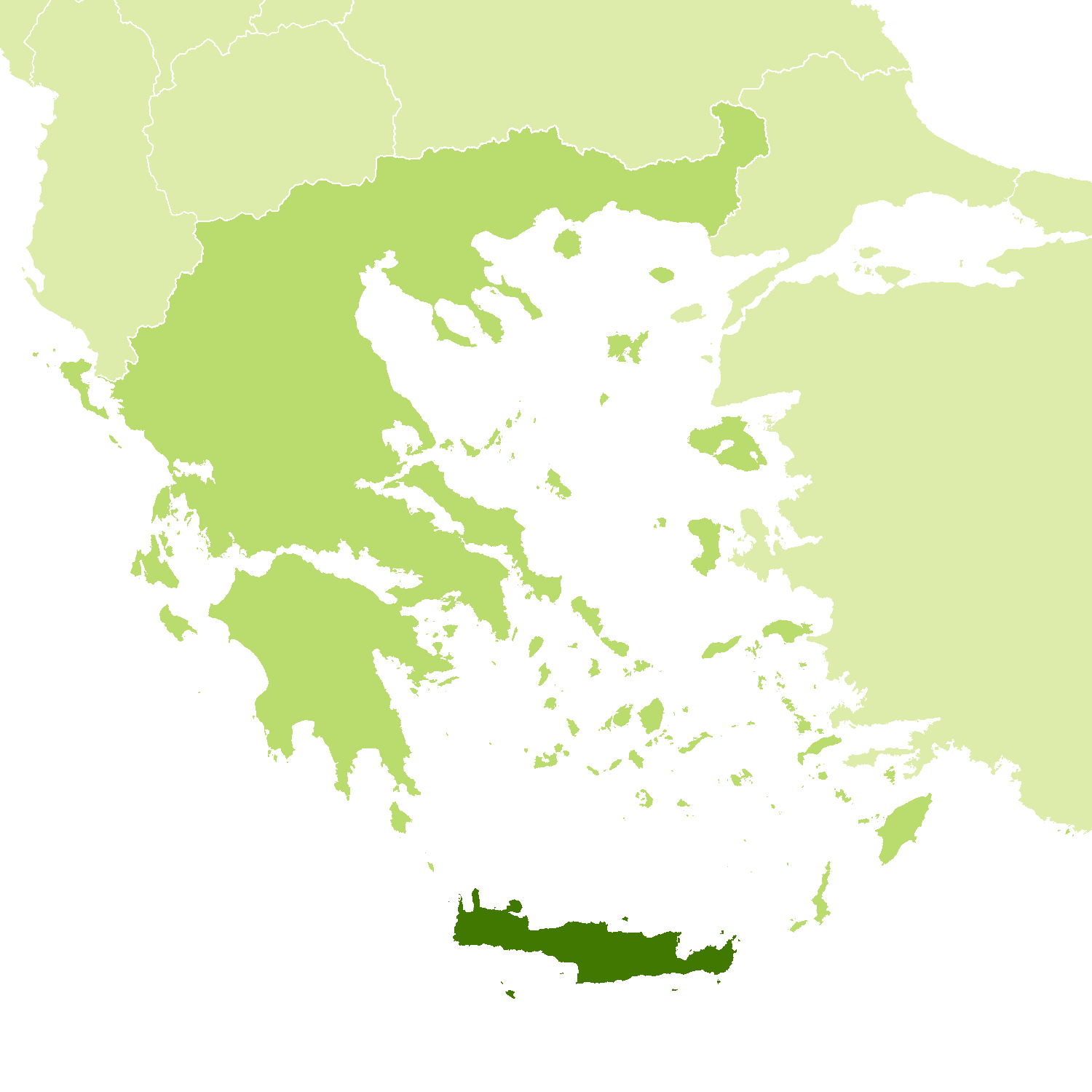
A small universe teeming with beauties and treasures
| Location: | Greece, in the Southern Aegean Sea |
| Coordinates: | 35° 15′ N, 24° 45′ E |
| Size: | • 85 km N-S; 260 km E-W • 55 miles N-S; 160 miles E-W |
| Terrain: | A mountainous island with deep valleys and many caves |
| Climate: | Mediterranean climate with hot summers and mild winters. Winter snow in the mountains. |
| Highest point: | Mount Ida 2,456 m / 8,058 ft |
| Forest: | 9% (2010 est.) (source) |
| Population: | 636,504 (2020) |
| Population density: | Low (75/km²) |
| Capital: | Heraklion |
| Languages: | Greek |
| Human Development Index: | Very high (0.888) |
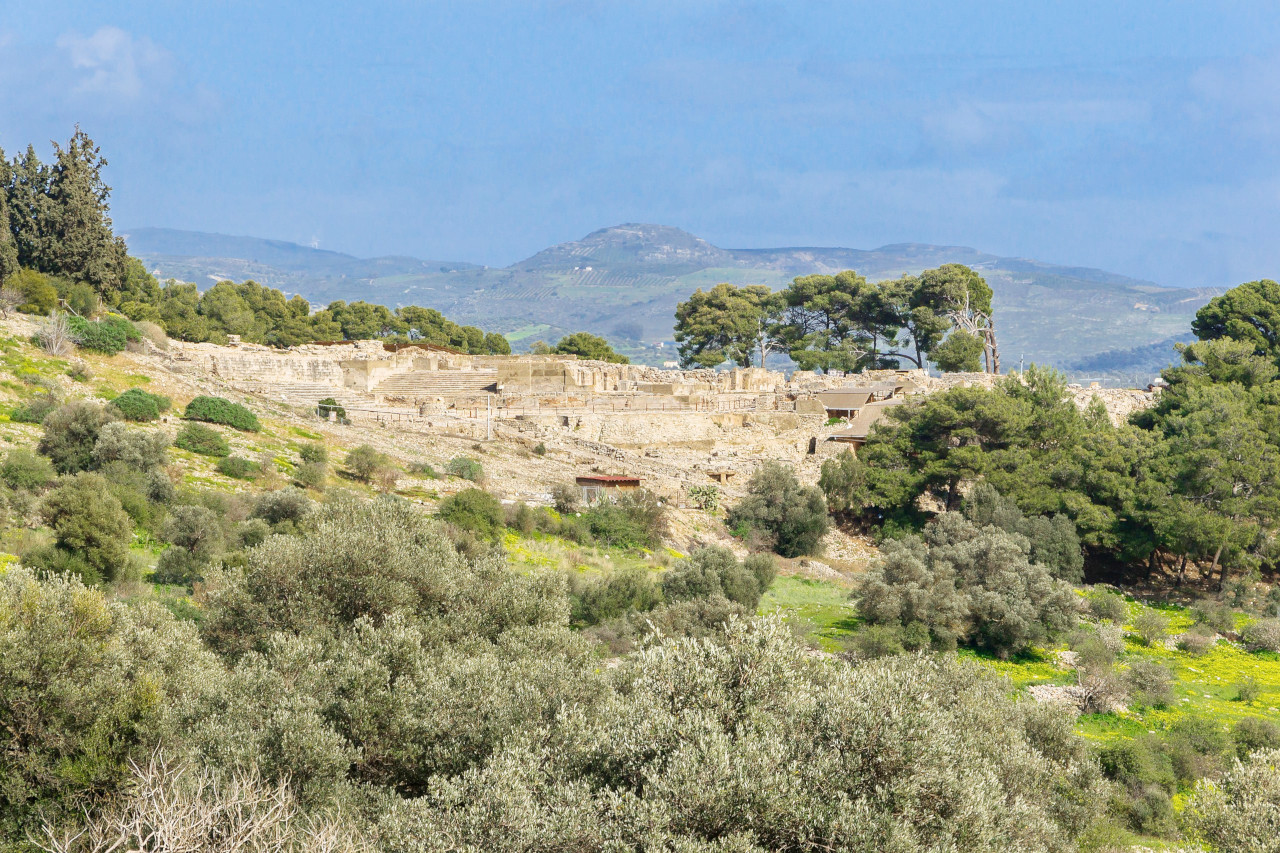
.jpg)
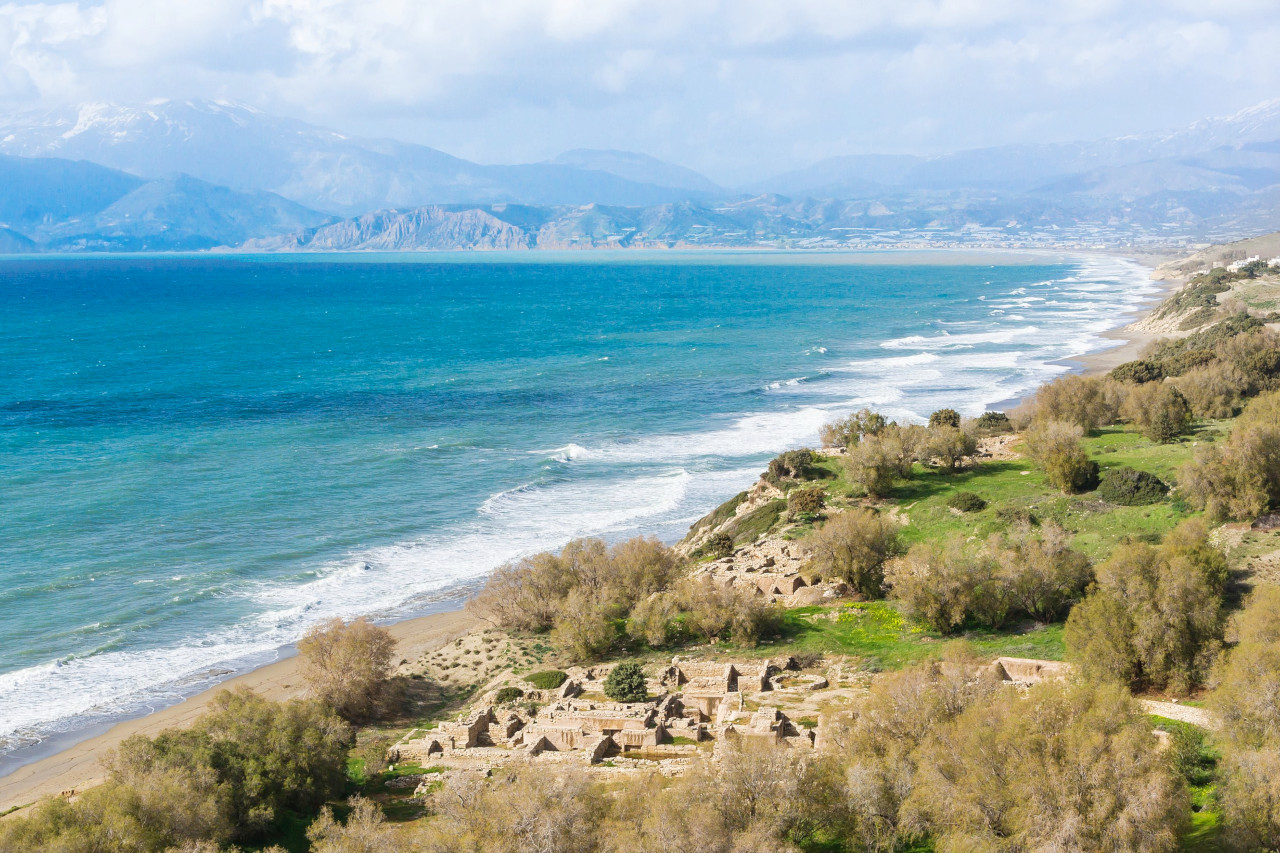
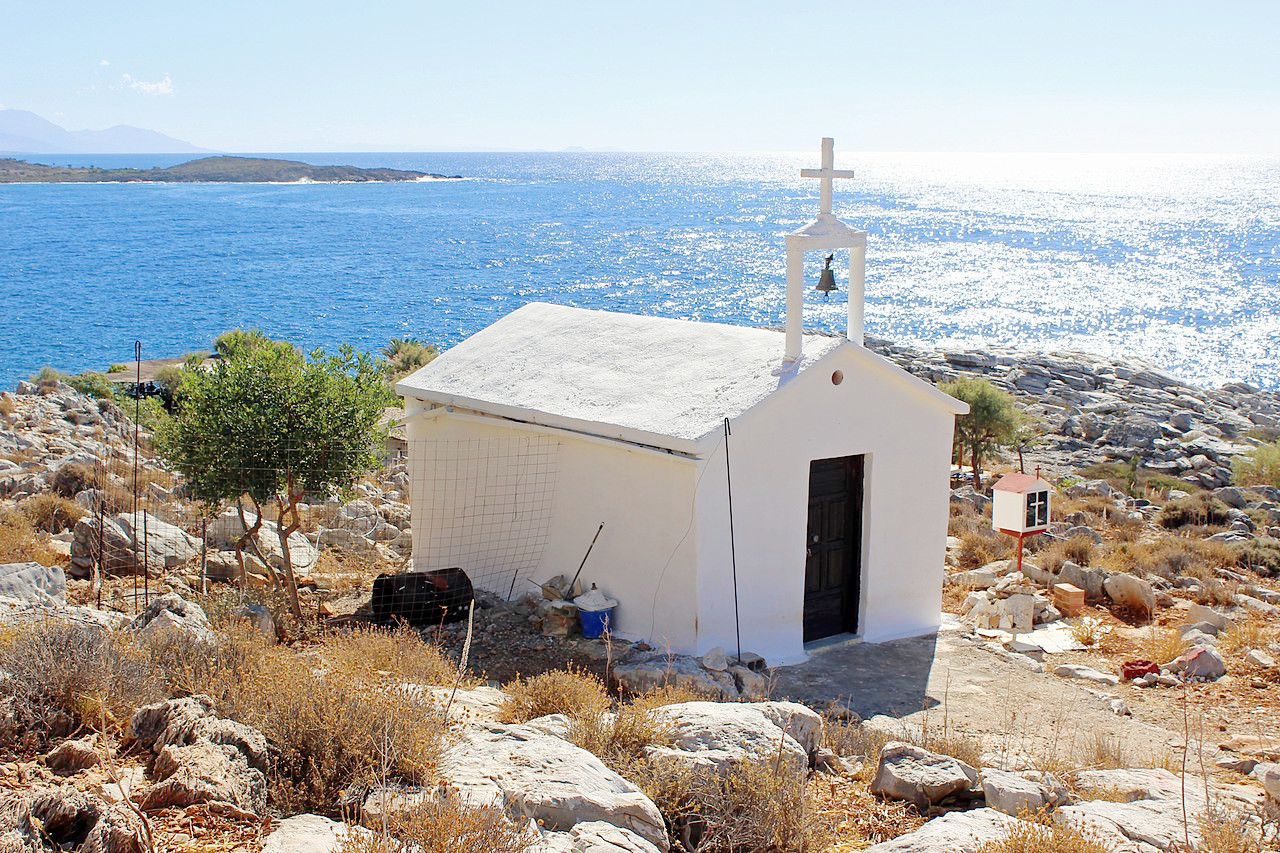
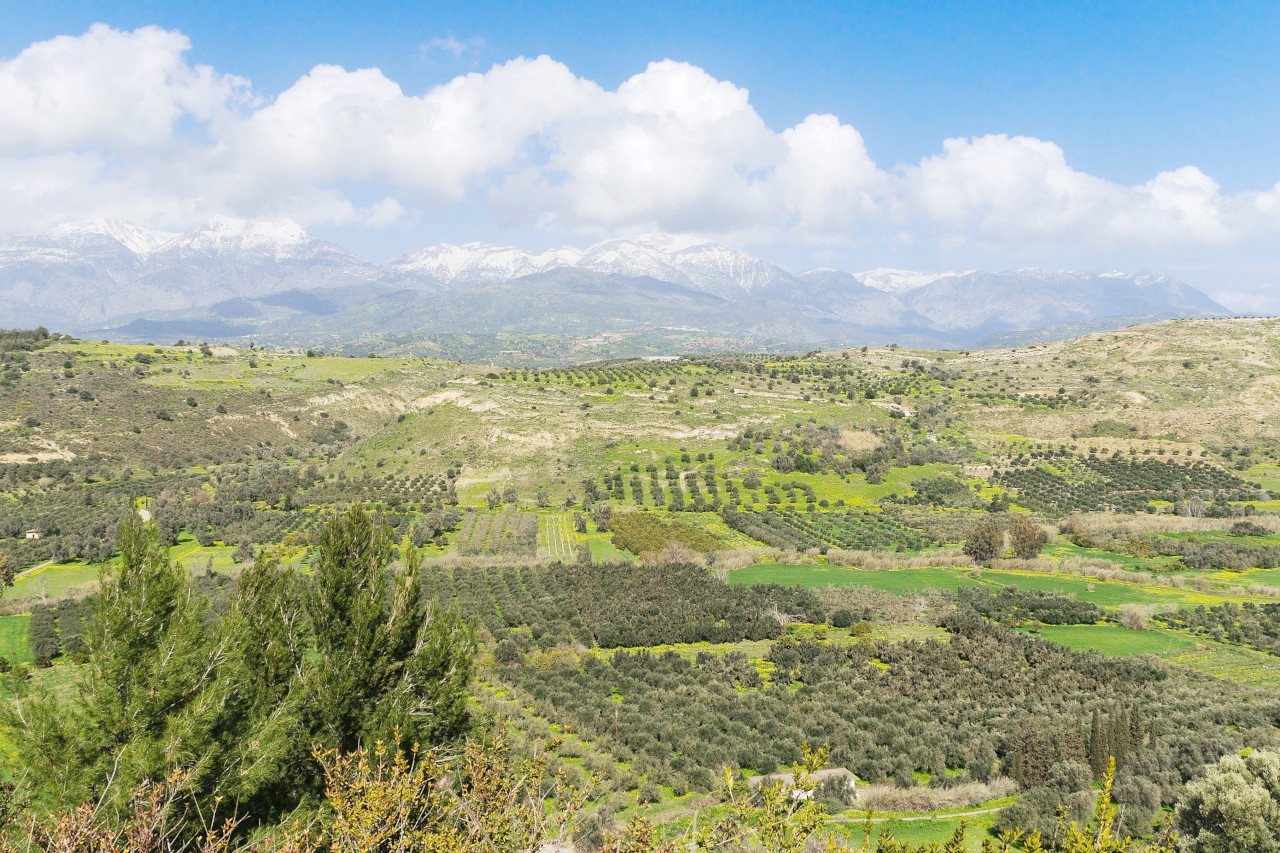
.jpg)
